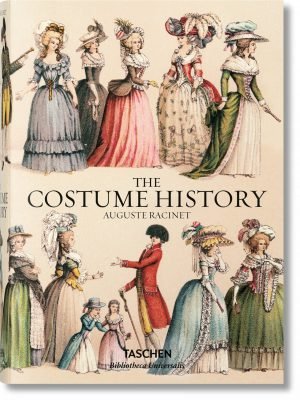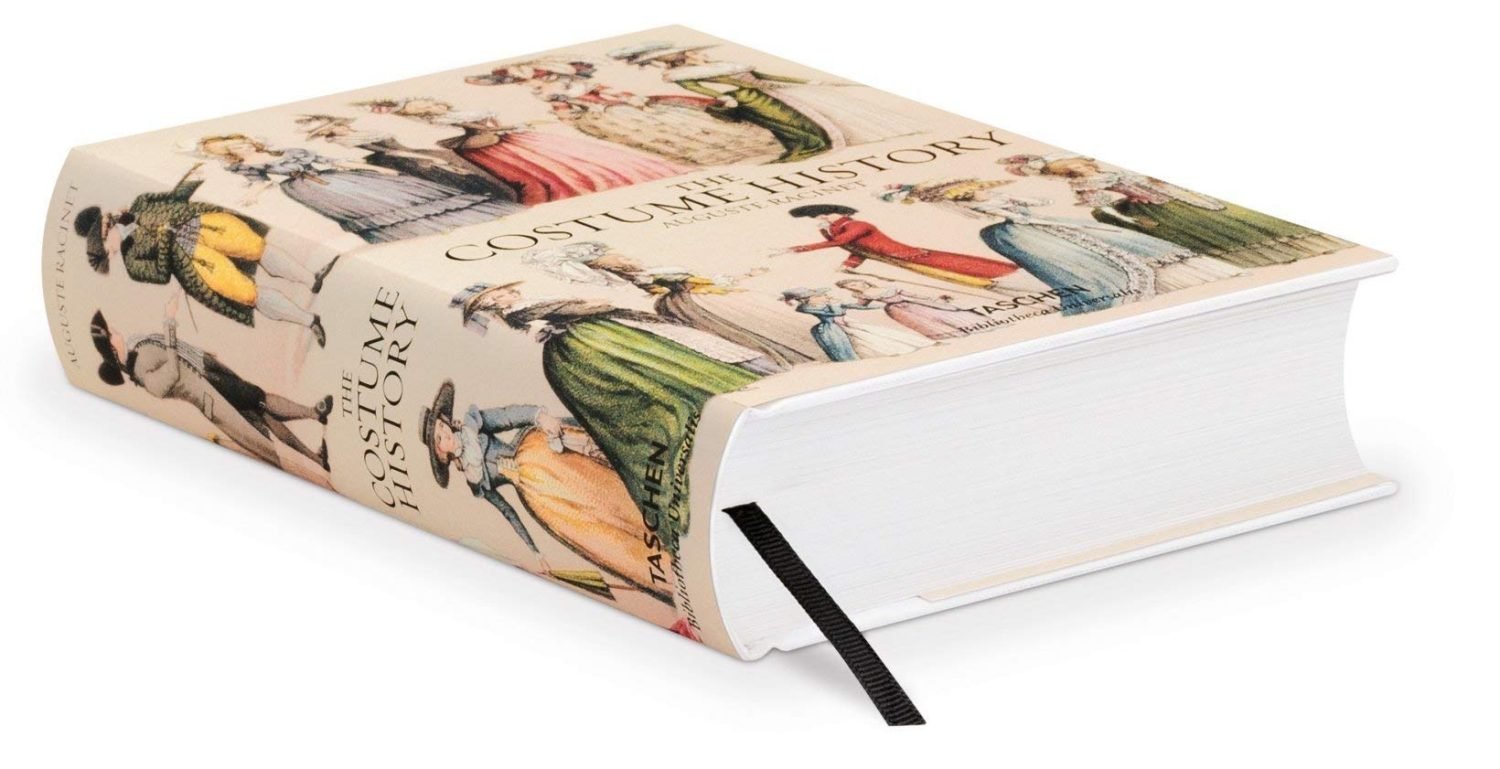
ASIA. COSTUMES OF PERSIA AND ASIA MINOR. FURNITURE. THE PHRYGIAN CAP. THE AMAZONES.
- Number 26. Young man from Palmyra. – The costume consists of a short, belted tunic, a light coat with short and tight sleeves, the anaxyrides, tight-fitting trousers reaching down to the ankles, and half-boots. – After a relief.
- No. 27 Indian Bacchus after an antique published by Winckelmann. The forearms are restored.
- No. 3. parts of female costume.
- Number 10 and 19. Persians. One wears a cap, the other the pointed mitre or tiara. Wide upper garment with funnel-shaped sleeves, which are apronted at the sides with the belt, under which the tight cut of the underdress is visible.
- No. 17. Persian king. Pearl embroidered mitre and a tiara with crenellated, serrated tips. From the Parisian Collection of Antiquities.
- No. 15. Footwear.
- Number 4 and 13. Armchair or throne.
- Number two. Fly whisk.
- These first 10 numbers refer to Persia. The numbers 2, 3, 4, 10, 13, 15 and 19 are reliefs from Persepolis and borrowed from the tombs of the neighbouring Naxi Rustan.
- Nos. 5 and 6. Parther. The hairstyle follows the luxury of the Medes and Persians. The tiara, with the tip turned over, matches the Phrygian cap. (Based on coins in the Cabinet des médailles of the National Library of Paris.)
- No. 20. Parthamaspates (c. A.D. 116), King of the Parthians, after the Arch of Constantine in Rome. He wears, as can be seen on the sleeves, one tunic over the other and a limited coat.
- No. 14. Tiara, quiver and bow, the ordinary weapons of the Parthians. According to a coin in the Parisian antiquities cabinet.
- No. 12. Tigranes, King of Armenia. Tigranes, King of Armenia.
- No. 9. Armenian tiara with bow and arrows. Roman coin.
- No. 22. Personification of the conquered Armenia, begging for mercy. The tiara is placed over the mitre. According to the Roman coin.
- No. 16. A similar tiara. According to a coin.
- Nos. 1, 23 and 24. Amazons drawn after Greek vase designs. Tichbein and Passeri.
- No. 18. Asian headdress of a woman personifying Phoenicia or Phrygia. According to a coin in the Parisian antiquities cabinet.
- No. 11 and 25. Mitren or Phrygian caps with chin bands, called redimicula by the Romans.
- No. 21. Phrygian shepherd. Statue of Attys, the beautiful shepherd beloved by the Cybele. (From a relief.)
- Number 8. Paris after a mural in Herculaneum. He wears two belts. One is hidden under the tunic, the other is turquoise blue. The tunic is blue, the coat light blue, the mitre saffron. The anaxyrids are of the same color, but lighter.
- No. 7. Armenian. Long sleeve tunic and above it a short one without sleeves. (Published by Guattani.)
The Parthians, a warlike nomadic people, with their subjugation of Persia, also adopted old Iranian religion and customs and kept to the traditions of the Persian kings in costume and luxury. They wore long, wide, sometimes transparent robes, richly embroidered with gold. The peoples of the Near East, especially the Phrygians, also followed the Asian custom. In the costume the example given by the Assyrians and Babylonians was preserved.
The various components of this Asian costume are as follows: the simple tunic with one or two belts no. 8, with or without sleeves no. 1, 8, 21, 24 and 26; the tunic pulled over it with short sleeves or without sleeves no. 7 and 20; the long dress No. 7, 22 and 27, with wide sleeves No. 10, half-long No. 19; the light, open-toed, half-long coat with short, tight sleeves No. 26; the short, sleeveless coat No. 21; the half-long, sleeveless coat No. 8; the long, fringed royal cloak, no. 20; the leg garment, called Anaxyrides, which extends from the belt to the feet and is tied at the ankle with a band; the cap, mitre, tiara and crown, each worn separately no. 1, 6, 7, 8, 10, 19, 21, 23 and 26, or the tiara placed over the mitre No. 9, 12, 22, or the mitre fastened with a band No. 18, or the crown placed over the mitre No. 17. In very cold weather two tunics and three anaxyrides were worn on top of each other.
The Phrygian cap had different shapes. It was conical or egg-shaped, like that of Ulysses, or cylindrical, like that of the Roman freedmen. When the tip is bent forward, the shape of the actual “Phrygian cap” no. 25 is created. In Roman times this headgear was called pileus; it was a sign of the free man and was therefore also given to a slave by his master on his release. On ancient monuments of art Paris usually appears with the Phrygian cap. The pileus is the usual headgear of sailors, fishermen and craftsmen.
The Phrygian mitre is also used to depict the Amazons, who, however, do not appear on works of art with mutilated right breasts, but are completely well formed. The Greek and Roman artists did not follow the tradition of the historians, according to which the Amazons burned their right breast in order to be able to draw a bow better. The Amazons are usually depicted with a light tunic, which leaves the right shoulder and the right arm free to facilitate the mobility of the latter when swinging the battleaxe.
Source: History of the costume in chronological development by Albert Charles Auguste Racinet. Edited by Adolf Rosenberg. Berlin 1888.








